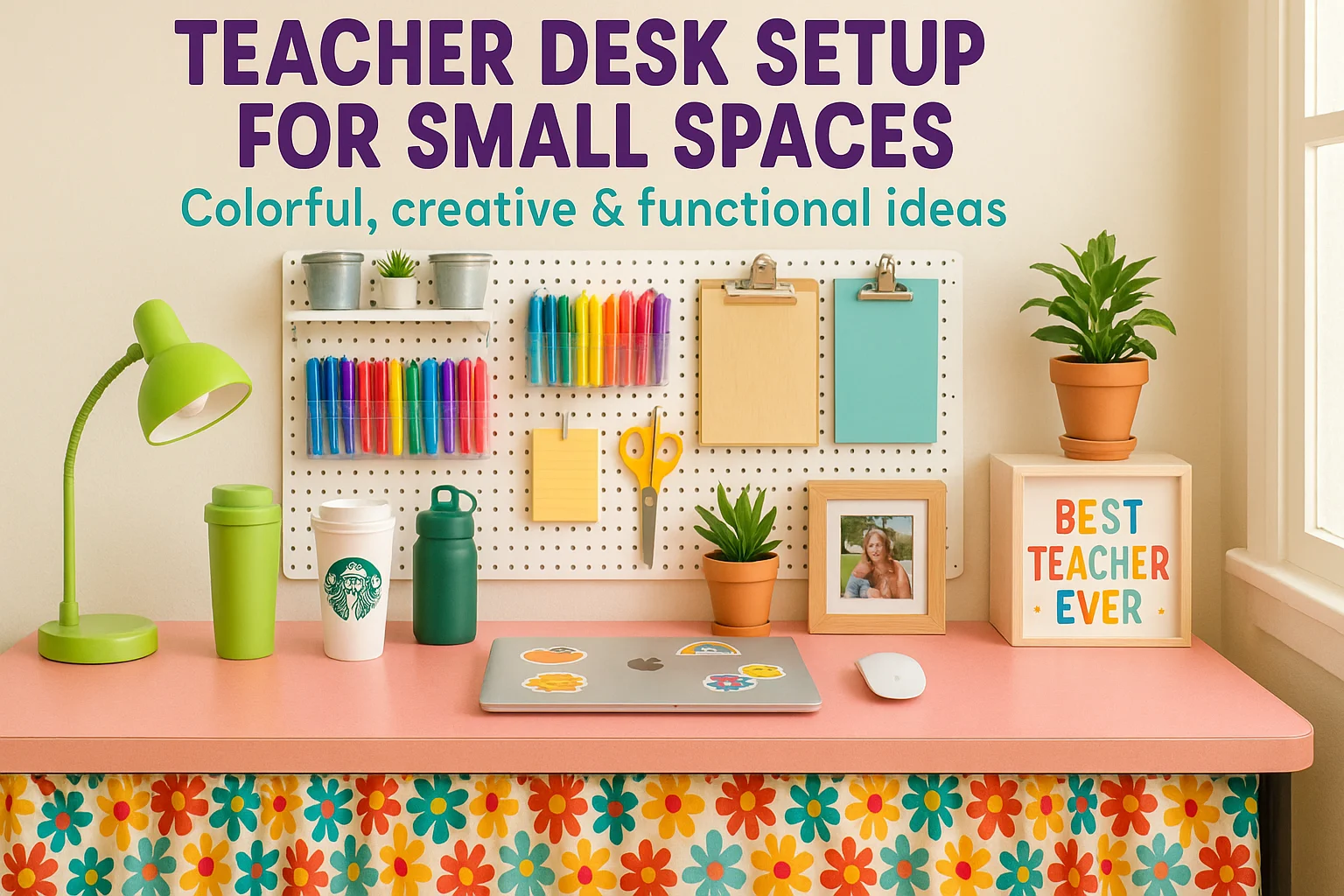Your cart is currently empty!

Changing Schools as a Teacher: Is it Really as Good as a Holiday?
Thinking about changing schools? Explore how a change can refresh your career and personal life. Get tips on transitioning smoothly.
This post may contain affiliate links. At no cost to you, I may earn a small commission if you click on any affiliate link within my blog.
They say a change is as good as a holiday. But is it really? I’m putting that theory to the test. After nearly 8 years of teaching in the same school, I’ve decided to shake things up and see what happens. I’m not leaving the profession (yet), but I am changing schools as a teacher – something I never thought I’d do again.
It’s not the first time but I thought the last time… was the last time. The familiar routines that once felt comforting now feel a little too predictable. The staffroom chatter, the classroom walls, even the morning drive, it’s all started to blur together.
So, I’m on a mission. A personal experiment. Can a fresh start bring back the spark? Will a new environment lighten the load or just bring a different kind of stress? I don’t have the answers yet, but I’m stepping into the unknown to find out.
This is my journey – one that might lead to renewed energy, unexpected challenges, or even the realization that it’s time for a bigger change. Either way, I’m here for the ride.

For many, changing schools as a teacher brings a mix of excitement and nervous anticipation. It’s like the thrill of a holiday, refreshing, invigorating, and full of possibilities.
After years in the same job, it’s natural to crave growth and new challenges. Moving to a new school or role can feel daunting, but it’s also an opportunity to rediscover your purpose. Whether it’s adapting to a different culture or exploring innovative teaching methods, change can be a powerful catalyst for personal and professional development.
This article will guide you through the journey of embracing change. Let’s explore if stepping out of your comfort zone can lead to a more fulfilling career and life.
Let’s see where this leads.

Key Points
- Change can be as refreshing as a holiday, offering new perspectives and opportunities.
- Moving to a new school or role can reignite passion and purpose.
- Adapting to different environments enhances personal and professional growth.
- Practical strategies can make the transition smoother and more rewarding.
- Embracing change fosters resilience and self-confidence.
Understanding the Reasons Behind a Change in Teaching Careers
If you’re feeling like your daily routine has lost its spark, a fresh environment might be the answer.
For me I started to reach a point where my teaching days felt stagnant, and the roadblocks for new challenges and promotions signalled it was time to move elsewhere. I no longer felt appreciated and I was just a dispensable employee doing all the work while those in leadership got all the benefits and credit.
Evaluating Professional Growth and New Challenges
When your teaching day becomes predictable, or you end up in a siutation like mine, it’s natural to seek fulfilment and growth. Setting new career goals can help you rediscover your purpose. For example, transitioning to a different grade or school can expose you to fresh teaching methods and student dynamics. This not only enhances your skills but also keeps your work exciting and fulfilling.
If you were to reflect on your current role, are you meeting your professional aspirations? If not, it might be time to explore new challenges. Many educators find that a change in environment aligns better with their long-term career goals.
Balancing Personal, Family, and Career Priorities
Balancing personal time with career ambitions is a key factor in deciding to make a change. For many, the demands of a classroom can clash with family priorities. A new district or role might offer a better work-life balance, allowing you to focus on both your career and personal life.
Consider your current schedule. Does it leave enough time for family and self-care? If not, a change could help you realign your priorities. Remember, a fulfilling career should complement your personal life, not compete with it.
- Stagnant routines can signal it’s time for a change.
- New challenges in a different grade or school can reignite passion.
- Balancing personal and career priorities is essential for long-term satisfaction.
- Reflect on your current role to determine if it meets your needs.
Strategies for Changing Schools as a Teacher
Stepping into a new role can feel like opening a door to endless possibilities. While the unknown may seem daunting, it’s also a chance to grow and thrive. With the right mindset and tools, you can turn this transition into a rewarding experience.

Embracing New Opportunities and Overcoming Fear
Change often brings a mix of excitement and uncertainty. It’s natural to feel nervous about leaving a comfortable position. However, focusing on the opportunity to learn and grow can help ease those fears.
Start by setting small, achievable goals. For example, revisiting curriculum materials or attending professional development sessions can boost your confidence. These steps prepare you for the challenges ahead and remind you of your capabilities.
Navigating the Transition Process Smoothly
Planning is key to a seamless transition. Visit your new school early to get a feel for the space. This allows you to become familiar with school layouts and procedures as well as organize classes efficiently.
- Consider implementing systems to maintain balance.
- Prioritize tasks and create a to-do list to stay on track.
- Revisit slow living for teachers key strategies to stay true to your values.
These strategies help you focus on what truly matters during this busy time.
Learning from Real-Life Experiences and Success Stories
Many educators have successfully navigated similar transitions. Their stories highlight the importance of perseverance and adaptability.
Remember, every challenge is a stepping stone toward a richer career and personal fulfillment.
| Common Fears | Strategies to Overcome |
|---|---|
| Fear of the unknown | Set small, achievable goals to build confidence. |
| Leaving a comfortable position | Focus on the opportunity to learn and grow. |
| Balancing work and personal life | Implement self care systems |
Effective Classroom and Community Integration
Starting fresh in a new environment can feel like a breath of fresh air. It’s a chance to create a space that inspires both you and your students. By focusing on organization and connection, you can build a foundation for success and belonging.

Creating a Productive and Inviting Classroom Environment
Your classroom is more than just a space. It’s a place where learning comes to life. Start by rearranging furniture to encourage collaboration and movement. Remove unnecessary items to keep the area clutter-free and focused.
Visual cues like bulletin boards can inspire creativity and engagement. Use them to showcase student work or highlight upcoming projects. A well-organized environment not only boosts productivity but also creates a welcoming atmosphere for everyone.
Building Relationships with Colleagues, Administrators, and Students
Strong relationships are the backbone of a thriving community. Introduce yourself to colleagues and staff within the first week. These small gestures lay the groundwork for collaboration and support.
Take time to connect with administrators to understand school policies and expectations. Attend school events or join lunch gatherings to foster a sense of belonging. These actions help you feel more integrated and valued.
With students, focus on creating a safe and inclusive space. Simple gestures like greeting them at the door or asking about their interests can make a big difference. A positive classroom culture encourages engagement and improves learning outcomes.
- Rearrange furniture to promote collaboration and focus.
- Use visual cues like bulletin boards to inspire creativity.
- Introduce yourself to colleagues and staff early on.
- Connect with administrators to understand school policies.
- Build rapport with students through small, meaningful actions.
Managing Stress and Preventing Burnout in a New School Setting
Navigating a new environment can feel overwhelming, but it’s also a chance to reset and thrive. Starting a new job often comes with excitement and challenges. To make the transition smoother, it’s essential to focus on stress management and self-care. Here are practical strategies to help you stay balanced and energized.
Implementing Time Management and List-Making Techniques
Effective time management is key to avoiding burnout. Start by creating a clear to-do list each day. Prioritize tasks based on urgency and importance. Tools like digital planners can help you stay organized and track classroom needs.
Break your tasks into manageable chunks. This approach ensures you stay productive without feeling overwhelmed. Allocating specific time slots for planning and grading can also help maintain a balanced schedule.
Setting Healthy Boundaries and Saying No When Needed
Establishing boundaries is crucial for long-term well-being. Learn to say no to extra duties that don’t align with your priorities. This protects your time and energy for what truly matters.
Set clear limits on work hours and avoid checking emails after school. Reserve evenings and weekends for personal time. These small changes can make a big difference in reducing stress.
Exploring Alternative Roles Within the Education Field
If the demands of a traditional classroom feel too taxing, consider alternative roles. Positions like curriculum development or instructional coaching offer new challenges while reducing direct classroom responsibilities.
Exploring these options can reignite your passion and provide a healthier work-life balance.
Remember, your well-being is just as important as your professional success.

| Common Stressors | Effective Solutions |
|---|---|
| Overwhelming workload | Use a to-do list and prioritize tasks. |
| Lack of personal time | Set boundaries and avoid after-hours work. |
| Feeling unsupported | Seek out staff resources and wellness programs. |
By implementing these strategies, you can manage stress effectively and prevent burnout. A balanced approach ensures you thrive in your new job while maintaining your well-being.
Conclusion
Taking the leap into a new chapter of your career can feel both exhilarating and daunting. Whether it’s a new job, a different grade, or a move to another district, this change offers a chance to grow and rediscover your purpose. Reflecting on your year-to-year progress can help you identify when it’s time for a fresh start.
Practical strategies, like reimagining your classroom space or setting clear boundaries, can make the transition smoother. Support from colleagues and administration plays a vital role in navigating this journey. Remember, every decision, big or small, contributes to a more fulfilling career.
Embrace this opportunity with confidence. Trust your instincts, celebrate the lessons learned, and let this change energize your passion for education. The journey may have its challenges, but I think the rewards are worth it. Well at least I’m about to find out. I’ll keep you posted.





